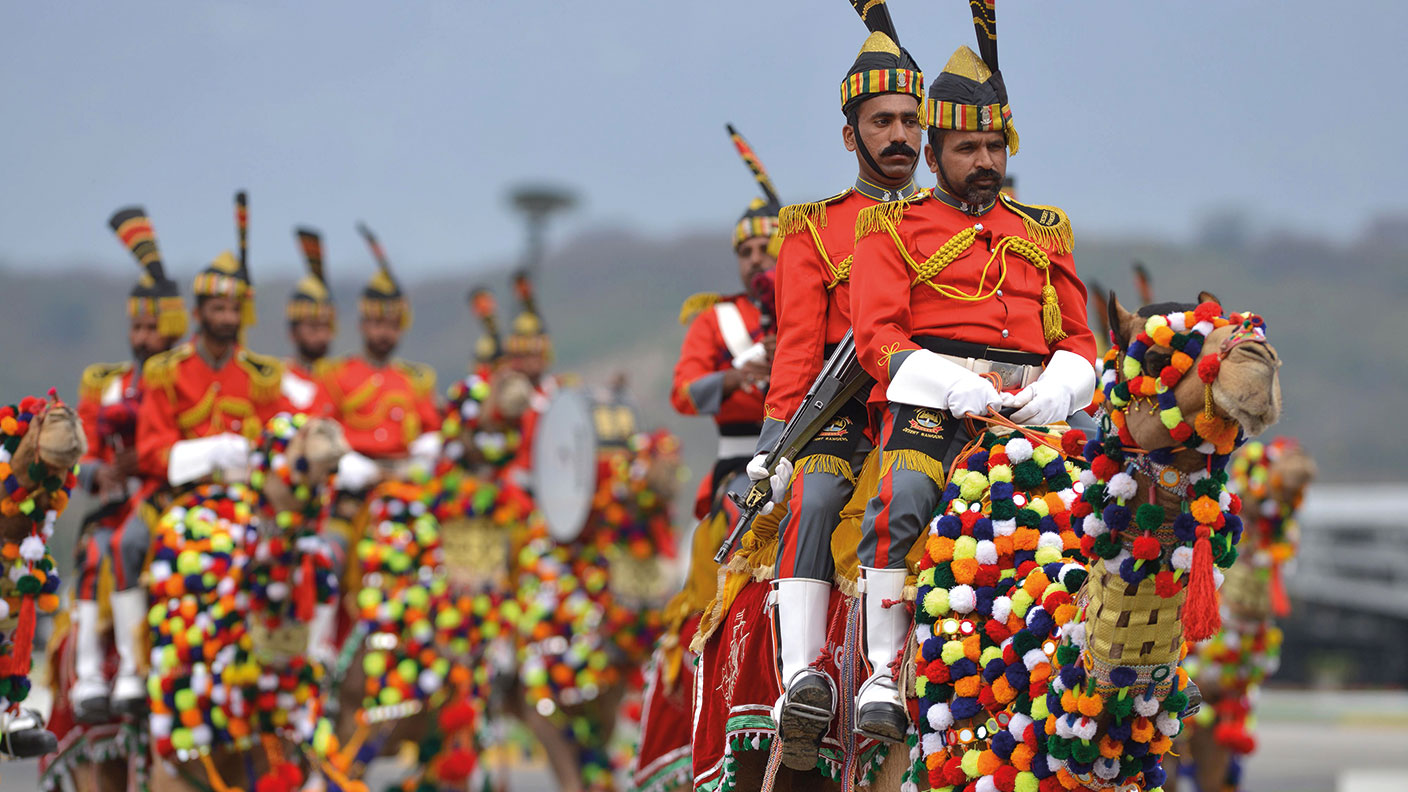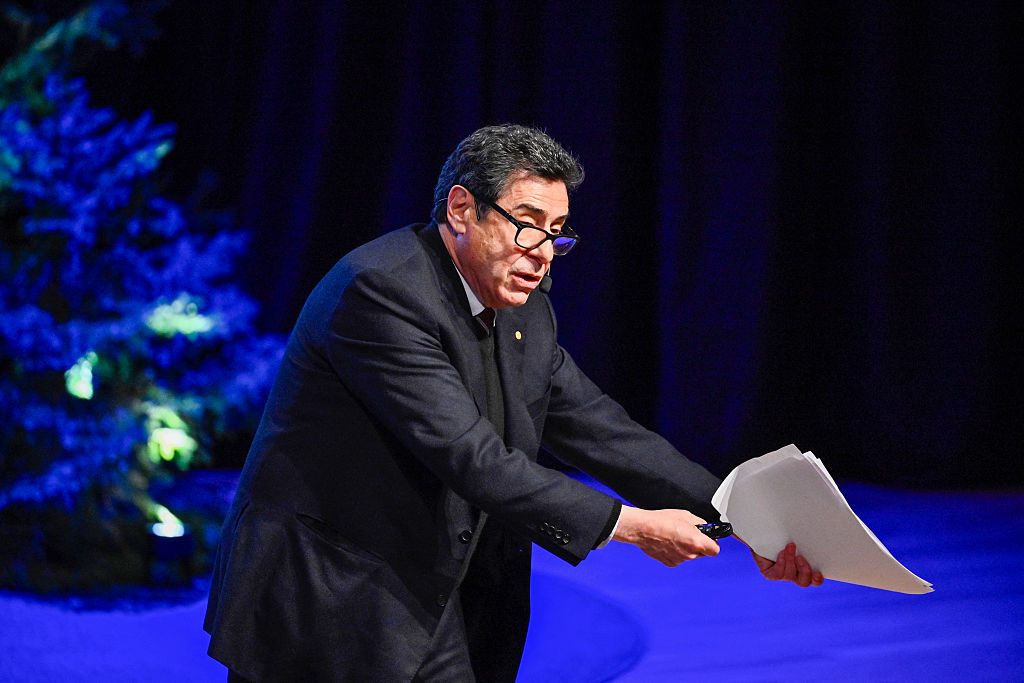The IMF and World Bank: a truly gruesome twosome
The International Monetary Fund and the World Bank, set up in 1944, now look sclerotic and ineffectual, says Jonathan Compton.

In July 1944 America and the UK spearheaded an attempt to agree a series of rules for the post-war global monetary system. The United Nations Monetary and Financial Conference in Bretton Woods, New Hampshire, brimmed with good ideas for a better world. The best of them was to make the US dollar the de-facto world currency. All others were then pegged to the dollar at a fixed rate while the greenback in turn was linked to gold at $35 per ounce. Member governments could demand that their dollars be converted into gold in certain circumstances.
In the context of the time it was a brilliant plan, ushering in a period of relative exchange-rate stability. Unfortunately it eventually came unstuck: huge increases in US expenditure, on the Vietnam War and various welfare projects, destabilised the dollar. The agreement was suspended and then collapsed between 1971 and 1973. The dollar standard designed at Bretton Woods ushered in a Cinderella moment for the global economy. Unfortunately, the conference also produced Cinderella’s two ugly sisters: the International Monetary Fund and the World Bank.
The International Monetary Fund (IMF) was originally set up to oversee the fixed-exchange rate system based on the dollar. After the collapse of the Bretton Woods currency agreement it no longer had a purpose, but it promptly reinvented itself as a new body with the following grandiose mission statement: “to ensure globally the stability of the monetary system, foster co-operation, stability, trade, high employment, growth and reduce poverty”. In short, God-like powers. The third creation of the conference was the World Bank (WB). Its more modest mission is “to reduce poverty and build prosperity in developing countries”.
MoneyWeek
Subscribe to MoneyWeek today and get your first six magazine issues absolutely FREE

Sign up to Money Morning
Don't miss the latest investment and personal finances news, market analysis, plus money-saving tips with our free twice-daily newsletter
Don't miss the latest investment and personal finances news, market analysis, plus money-saving tips with our free twice-daily newsletter
Boondoggling around the world
There are many similarities between the two. Both are owned by their 189-country members, each of which has a seat on the board of governors. Both are stuffed with economists. They comprise nearly half of the IMF’s 2,800 employees; the WB is four times larger. Most staff are based in the organisations’ Washington headquarters, which are on the same street. Being multinational agencies their structures are bureaucratic and politicised. By an arcane gentlemen’s agreement, the president of the IMF has always been a European, the managing director of the WB (with one exception) an American citizen.
There is a strong whiff of a boondoggle surrounding both. Pay and perks are lavish. On my occasional visits to their headquarters, the atmosphere was one of catatonia, with decision-averse staff focused on internal politics. I never saw the same person in the same role twice.
Structurally both look out of date, reflecting world economic power 50 years ago. America, Europe and Japan have the largest votes (but still also pay in the most money), with China only grudgingly allowed a bigger vote two years ago. The US, Germany, France, UK (and recently China) are the only countries with permanent executive board directors in both bodies, with Japan on the IMF only. America has a de-facto veto over decisions. Yet for all the overlaps and confusion in most people’s minds, the differences are significant.
First the WB. The larger of the two, with a wider brief, greater financial firepower and more real roles than the IMF, it is usually below the radar. The financial model is excellent, providing long-term loans and investment to poor countries at interest rates well below those they would have to pay if they borrowed directly from capital markets. The WB can borrow from markets at ultra-low rates because it has a triple-A rating (the best). Last financial year it had an “active portfolio” – loans and investments in projects – of $244bn, ranging from infrastructure and energy to hospitals and agriculture. Bad debts are few and it often makes a profit from its own investments and from co-funding successful projects. Too good to be true? Of course.
Ignoring constructive criticism
Although it has undoubtedly improved lives for many people, the WB’s own Independent Evaluation Group reports show an inability to learn from previous mistakes, poor credit and investment controls and ineffective measurement of results – all accompanied by self-congratulation. Most proposed improvements are ignored.
Developing nations resent that the organisation remains dominated by North Atlantic countries, which are perceived – often correctly – to be using the WB and its programmes to fund their allies, supporters and interests. The WB has consistently lent to dictatorships where cronies siphon off funds as advisers, suppliers and contractors, making London and Switzerland major accidental beneficiaries of its largesse to crooks. Worse perhaps, projects have involved the wholesale removal of local populations and considerable environmental damage, all swept under the carpet. Change may come as the result of a Trump appointee, David Malpass, becoming the 13th leader last year. With a long record of being against multilateralism, he may bring in some necessary rationalisation before going native like his predecessors.
Turning to the IMF, like most bureaucracies it is keen to trumpet its successes and bury its problems. Of the three IMF managing directors between 2004 and 2019, one later went to prison for embezzlement, one was a sexual predator forced to resign and the third, Christine Lagarde, was convicted in 2016 by a French criminal court for “negligence in a public office” when as finance minister she approved a €403m bung to one of President Nicolas Sarkozy’s supporters.
The IMF’s principal purpose is to act as the World’s bad cop. Occasionally downturns risk spreading economic depression and bankruptcy. This is usually the result of a domestic credit cycle that has spun out of control. Sometimes foreign investors have pumped in so much money that local interest rates are forced too low and the exchange rate too high. Either way, the government or international creditors then call for the IMF.
This is one reason why the IMF tends to be unpopular. It appears only when there is a crisis and before providing credit lines from its own and other sources insists on “conditionality”, also known as the Washington Consensus. This requires that the recipient country implement certain reforms. Governments are told to slash expenditure on pensions, welfare and subsidies, cut the number of employees and increase taxes.
Attaching conditions to any bailout makes sense and is required within the IMF framework. Its sole source of funds is the amount (so-called quotas) on which it can draw from its member countries, who in turn don’t want to see their money disappear. The major benefit of conditionality is that it forces incompetent administrations into necessary reforms while providing a fig-leaf for politicians who can claim that these reforms were forced on them. Yet this medicine often fails, not least because the cuts crush domestic consumption, the key growth driver for most economies.
The prescriptions for small economies involving little money have tended to work out well; recent examples include Iceland, Cyprus, Jamaica, Portugal and Ireland. But the results of larger bailouts are at best equivocal. Greece and Italy’s economies, for instance, are smaller than before the financial crisis. The only major long-term changes have been higher debt and unemployment.
This highlights the true purpose of the IMF: to prevent sovereign default out of fear of a domino effect. Yet this often involves repaying foreign lenders in full for their bad gambles while making recipient countries worse off than if they had defaulted and started from scratch. Worse, it distorts international capital markets by encouraging lenders to pour capital into the riskiest countries with higher interest rates, in the knowledge they’ll be bailed out.
A self-induced crisis
Now the IMF is trundling towards its own self-made crisis. It has a history of glossing over bad debts with new loans: Pakistan has borrowed 22 times since 1958. The top five borrowers – accounting for nearly three quarters of the IMF’s outstanding credit lines – in order are Argentina, Egypt, Ukraine, Greece and Pakistan. None has the ability to repay. It’s a giant hole. Alarm bells should also be ringing for investors over the IMF’s gradual policy reversal from capital without borders to allowing capital controls.
More than any other event these spell the end of global markets as, for the first time in 22 years, investors rediscover that in a crisis they won’t be allowed to repatriate their money. This will change the whole approach to assessing country risk. Now in their 70s, the IMF and WB have become sclerotic and in the former’s case, potentially dangerous. With the global slowdown that began last year now seriously exacerbated by the current pandemic, two key institutions set up to mitigate the worst effects are dangerously weak.
• Jonathan Compton worked in investment banking and asset management for 35 years and now writes and lectures on financial markets as well as managing some pubs and farms. (jlcompton@outlook.com)
Get the latest financial news, insights and expert analysis from our award-winning MoneyWeek team, to help you understand what really matters when it comes to your finances.
Jonathan Compton was MD at Bedlam Asset Management and has spent 30 years in fund management, stockbroking and corporate finance.
-
 Taxpayers urged to fight automated HMRC penalties as 20,000 win on appeal
Taxpayers urged to fight automated HMRC penalties as 20,000 win on appealHMRC loses more than 60% of cases when taxpayers appeal an automated penalty it has imposed, new figures show.
-
 More than five million taxpayers overpay with wrong tax codes – how to check yours is right
More than five million taxpayers overpay with wrong tax codes – how to check yours is rightHMRC overcharged taxpayers £3.5 billion in income tax the latest data shows, with tax coding errors largely to blame. Accountants say it is “essential” people check their tax codes to avoid being hit with higher bills.
-
 Nobel laureate Philippe Aghion reveals the key to GDP growth
Nobel laureate Philippe Aghion reveals the key to GDP growthInterview According to Nobel laureate Philippe Aghion, competition is the key to innovation, productivity and growth – here's what this implies for Europe and Britain
-
 'Investors should brace for Trump’s great inflation'
'Investors should brace for Trump’s great inflation'Opinion Donald Trump's actions against Federal Reserve chair Jerome Powell will likely stoke rising prices. Investors should prepare for the worst, says Matthew Lynn
-
 The state of Iran’s collapsing economy – and why people are protesting
The state of Iran’s collapsing economy – and why people are protestingIran has long been mired in an economic crisis that is part of a wider systemic failure. Do the protests show a way out?
-
 Hiring new staff for your business? Help is available
Hiring new staff for your business? Help is availableHiring more employees is a costly business, but help is available from the government, says David Prosser
-
 'Expect more policy U-turns from Keir Starmer'
'Expect more policy U-turns from Keir Starmer'Opinion Keir Starmer’s government quickly changes its mind as soon as it runs into any opposition. It isn't hard to work out where the next U-turns will come from
-
 Why does Donald Trump want Venezuela's oil?
Why does Donald Trump want Venezuela's oil?The US has seized control of Venezuelan oil. Why and to what end?
-
 Britain heads for disaster – what can be done to fix our economy?
Britain heads for disaster – what can be done to fix our economy?Opinion The answers to Britain's woes are simple, but no one’s listening, says Max King
-
 Vietnamese stocks are charging ahead – what to buy
Vietnamese stocks are charging ahead – what to buyVietnam has been upgraded from a frontier to an emerging market. It remains a promising pick, says David Prosser